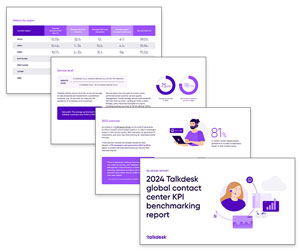Tips for maximising staff feedback, maximising customer feedback, measurement tools, recruitment practices and auditing your system.
Strategies for maximising staff feedback
1. Host morning kick-start meetings
We hold morning kick-start meetings for the teams in order to share experiences and learn the performance goals of their department.
We then have debrief meetings on Friday afternoons to get a feel for the week gone by, share challenges and successes for real-time staff feedback.
With thanks to Martin
2. Put together a “staff survey” group to action survey responses
We have a “staff survey” group which works on all the actions from the survey.
With thanks to Kim
3. Make good use of the intranet
We make good use of our intranet and use “suggestions” boxes to gather and share information internally.
With thanks to Nerys
4. Collate anonymous feedback using Survey Monkey
We collate anonymous feedback using Survey Monkey and share the results company-wide.
With thanks to Harj
5. Combine quarterly ESAT surveys and focus groups
We combine quarterly ESAT surveys and focus groups to get the best output.
With thanks to Helen
6. Nominate “Engagement Ambassadors”
We have “Engagement Ambassadors” (advisors who own a micro site on the intranet).
They allow our employees to present their feedback and suggestions via face to face, email or text. Generic feedback is also provided on large wallboards on site called ‘you said, we did’ tools.
With thanks to Suzanne
7. Make a daily newsletter and share it with your team
We have a daily newsletter that we share with our team which includes facts about the business and company communications.
We find it helps to generate conversation regarding these topics and keep our team engaged.
With thanks to Keith
Strategies for maximising customer feedback
8. Share survey results – warts and all!
Our survey results are shared in a monthly management meeting – warts and all! Issues are then filtered by department, and everyone is told when an issue is resolved.
With thanks to Harj
9. Report on positive and negative sentiment in all survey results
We use survey verbatim and analytics to report on positive and negative sentiment in all survey results. This is reported monthly to all in the company.
With thanks to Kim
10. Create customer councils to keep upper management in the loop
Customer councils consisting of your customers (and customers who regularly use other companies) can be very effective at keeping upper management engaged with the customer.
This can be a session once a quarter that allows upper management to meet with customers and hear the good and the bad for themselves.
With thanks to Keith
11. Interview your customers face to face
I sometimes interview the customers myself, and at times I go to meet them in person.
With thanks to Saberah
12. Review your VOC surveys daily
We get daily emails from our VOC (Voice of the Customer) surveys which give a top score and a bottom score.
With thanks to Kim
13. Try and turn around any bad experiences
Reviewing your surveys is important, but perhaps equally important is the follow-up with the customer and support technician.
When there is a bad experience with the customer you should try and turn it around, and when there is a good experience with the support technician you should give them recognition.
With thanks to Mark
14. Don’t forget to survey your IVR
Don’t forget to survey your IVR self-service.
With thanks to Thomas
15. Host monthly quality meetings
We have monthly quality meetings where all feedback is shared, and follow-up action is passed to management for execution.
With thanks to Harj
16. Use a signature block survey at the end of emails
We have found it highly effective to use a signature block survey at the end of our emails (which comprise 75% of our contact).
This gives the customer an opportunity to respond to whether we have answered their query. Responses are then reviewed in real time to provide the opportunity to resolve the customer’s issue quickly, or to immediately thank our staff for solving the customer’s query.
With thanks to Keith
17. Use Twitter as an internal communications tool
We use Twitter as an internal communications tool to relay messages to our teams.
With thanks to Matthew
Strategies for measurement tools
18. Present KPIs to management first to ensure buy-in
When setting up KPIs, provide a management outline first and then include the work floor. This should ensure commitment and buy-in from the top down.
With thanks to Dirk
19. Reward “best improvers” as well as “top performers”
We don’t just reward our agents who are “top performers”, but also those who are the “best improvers”.
With thanks to Kim
20. Ensure goals set for each KPI are periodically reviewed
Ensure goals set for each KPI are periodically reviewed, that way they can be adjusted based on changes in the environment.
Also make sure your incentive programmes are aligned with the KPI goals.
With thanks to Annette
21. Spend time seeing the work for yourself
To make sure you really understand if your KPI measurements are being effective, you should spend time seeing the work for yourself.
With thanks to Jamie
22. Make sure your employees understand each metric
Make sure your employees understand how each metric is measured, and what measurement the metric provides the call centre with.
So often agents don’t understand the metric or what significance it has.
With thanks to Annette
Strategies for recruitment practices
23. Review training ahead of each new starter
We review the training ahead of each new starter to check that it is still relevant.
With thanks to Jamie
24. Hire based on soft skills – as these are much harder to teach
I hire people based on whether they have the necessary soft skills for the job, as the job-specific (hard) skills are much easier to teach.
With thanks to Annette
25. Have an on-floor academy
We take our newly trained agents into an academy first. This supports their move on to the floor.
With thanks to Kim
26. Have an in-depth interview process in place
Our interview process is quite involved. We have a designated recruiter who conducts the first sift through the applications.
The selected few are then interviewed by myself and one of my supervisors – part of which is over-the-phone “customer scenario” role play. This is subsequently followed by a 4-week one-on-one induction.
With thanks to Harj
27. Behaviour interviewing is extremely important
Behaviour interviewing is extremely important. You should include role-play type questions to see if potential new recruits have the skills to do what is needed.
When asking the questions, I find it helps to close my eyes (or turn my back) and listen like I was a customer.
With thanks to Annette
28. Use interview questions based around customer operations values
We use interview questions based around our customer operations values; we call record sample telephone queries and they answer a sample email – all as part of the interview process.
In addition, when a member of the team leaves, they complete an exit interview to understand the good, the bad and the ugly.
With thanks to Madonna
29. Invest heavily in recruitment and keep trying new things
We invest heavily in recruitment, and are always trying new things. For example, we currently have one of our Directors running part of the induction.
With thanks to Steve
30. Make sure the right person is delivering the training
It is important to make sure the right person is delivering the training, rather than having one trainer handling everything.
I think that the supervisor sometimes relies too much on a single trainer to cover everything from every department.
With thanks to Annette
Strategies for auditing your system
31. Include ‘user’ feedback on time saved by automation
When calculating Return on Investment (ROI), include user feedback on time saved by automation; these minutes add up to a lot of saved money over surprisingly little time.
With thanks to Sharon
32. Integrate your systems to save time
Lack of system integration is definitely an issue.
In today’s world, we should not have to make the same update in multiple systems. It wastes valuable employee time.
With thanks to Annette
33. Relate system issues back to customer impact
Relating system issues back to customer impact helps the IT department to understand the urgency of the issues.
With thanks to Madonna
34. Have a GUI in place to shave off time from each call
Having a GUI (Graphical User Interface) in place – that pulls through the information used to assist the majority of calls – could shave off a tremendous amount of time from each call. It could also increase customer and associate satisfaction.
With thanks to Annette
35. Measure the time between the advisor click and the action finishing
Measuring the time between the advisor click and the action finishing gives you a real metric that you can use to attribute cost to the slowness of your system.
It is a really useful tool when reviewing AHT (Average Handling Time) each day, as you can see an additional impact.
With thanks to Keith
What strategies do you use to drive success in your contact centre?
Author: Megan Jones
Published On: 19th Feb 2014 - Last modified: 7th Jul 2022
Read more about - Customer Service Strategy, Key Performance Indicators (KPIs), Metrics, Recruitment, Staffing, Training





































